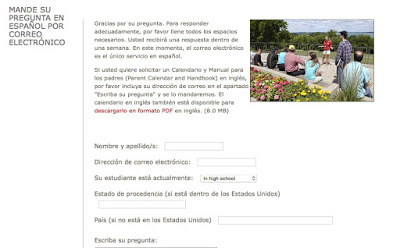Jun
16
To meet the needs of our largest international population and serve our domestic Spanish-speaking families, the University of Wisconsin-Madison launched a variety of translated services in Chinese and Spanish, including translated websites, a phone and email service in Spanish and translated newsletter content.
Spanish Site: www.parent.wisc.edu/spanish
Spanish Ask a Question Page: apps.parent.wisc.edu/ask_espanol.html
Chinese Site: www.parent.wisc.edu/chinese

For campuses considering translated offerings, here are a few tips:
- Don’t be afraid to take time to ask questions and identify the language you want to start with. Translation can be overwhelming and you can’t do it all well right away. Consider: What does your population look like? Who are your campus colleagues hearing from? What are your institutional priorities? Having these conversations on the front-end can save you time on the back-end.
- Be willing to invest in quality translation services. This doesn’t necessarily need to be a large company (though there are good ones out there). Look to language departments at your institution and recommendations from faculty for graduate students who may be looking for a paid position. Using an automatic translation service can be tempting, but putting out content that isn’t professional and doesn’t make sense to a reader isn’t serving your institution or your audience.
- Have your first translation checked by a second translator for big projects like websites. Like any first draft, it can be helpful to have someone edit content before launching your final product.
- Create a glossary. Because you’ll likely change translators over the years, it can be helpful to come up with a list of words that are unique to higher education or your program for consistent translation.
- Learn more about your audience. Meet with campus partners, hold student focus groups, and send out parent and family surveys to understand the needs of your audience. From these conversations, you might find that you want to reframe the way you talk about mental health services, include additional information about the visa process, or customize your content in some way.
- Use a consistent look and feel. Your translated content should stay on brand and have the same look and feel as your resources in English.
- Remember to market. When the project is finished, the marketing begins. Use the network of campus partners you built during the creation of your resource to help you reach your audience.
- Track and measure. Understand how your audience is using your content along the way. What do your website analytics look like? Are people reading your translated content, but not calling with questions? What might be the barriers to using your resources? Keep assessing and tweaking as you go.

Share this post:




